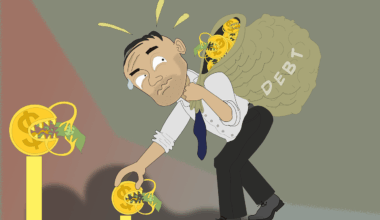The Relationship Between Personal Income and Spending Habits
Understanding the relationship between personal income and spending habits is crucial for managing finances effectively. People often grapple with decisions on how to allocate their income toward necessary expenses and discretionary spending. Personal income includes all earnings an individual receives, such as wages, salaries, bonuses, and investment profits. On the contrary, spending habits reflect consumer behaviors influenced by various factors, including discretionary income levels, consumer confidence, and economic conditions. As income increases, consumers tend to spend more, but the structure of spending may shift based on personal and societal influences. Additionally, factors such as age, education, and family status also play significant roles in shaping these habits. For instance, younger individuals may prioritize entertainment and dining out, while older adults may focus on saving for retirement. Evaluating the various aspects of personal income can provide insights into spending patterns that highlight financial stability or vulnerability. Furthermore, measuring the impacts of personal spending can serve to counteract ill-advised financial practices, leading to better economic outcomes for individuals and families alike. Thus, recognizing these relationships is vital for informed financial decision-making.
The dynamics of personal income affect overall spending in significant ways. For instance, one important aspect is the emergence of disposable income, which is the money remaining after essential expenses are paid. This disposable income is a critical driver of spending patterns, influencing how individuals allocate funds for non-essential items such as luxury goods or entertainment. When disposable income increases, individuals are more likely to indulge in purchasing higher-priced items or experiences. Conversely, during economic downturns, people may cut back on discretionary spending, focusing solely on basic needs. Economic indicators such as savings rates and consumer confidence indices directly correlate with this spending behavior. Families with higher savings might have different spending habits compared to those living paycheck to paycheck. Additionally, consumer sentiment plays a pivotal role in determining spending willingness. A positive outlook on the economy generally encourages increased spending, whereas pessimism might result in conservative spending habits. Consequently, analyzing these factors is essential for delineating the broader impacts of personal income dynamics on consumption patterns and establishing more effective financial practices.
Impact of Economic Conditions on Spending
Economic conditions serve as critical influencers of personal spending behaviors. During periods of economic growth, people often feel more secure in their financial situations, which can lead to increased consumer spending. This behavior can boost overall economic performance, creating a positive feedback loop. Higher consumer spending expands businesses, leading to job creation and further income growth for individuals. On the other hand, during recessions, consumers may adopt a more cautious approach to spending, focusing on necessities rather than luxuries. Such behavior can exacerbate economic downturns, as decreased spending can harm business revenues and lead to layoffs. The relationship between economic conditions and personal spending also hinges on interest rates and inflation rates. These factors can significantly affect borrowing costs and the value of money over time. When inflation rises, the purchasing power of income declines, leading individuals to adjust their spending habits accordingly. Understanding these connections is vital for economists, policymakers, and consumers so that they can navigate the financial landscape more strategically. Staying informed about economic conditions empowers consumers to make better choices regarding their spending.
Consumer confidence plays an essential role in determining how personal income translates into spending behaviors. When people feel optimistic about the economy, they are more inclined to spend rather than save, particularly on non-essential goods and services. This shift in behavior occurs because consumers believe that their financial stability will continue unabated, enabling them to indulge in luxuries. Conversely, adverse economic news can dampen consumer confidence, directly leading to reduced spending and increased savings. When consumers become apprehensive about future earnings, they may consider cutting non-essential expenditures, prompting businesses to struggle with excess inventory and revenue declines. This cycle illustrates the interplay between income, spending, and overall economic indicators. Behavioral economics also sheds light on factors that contribute to spending habits, such as social comparisons and marketing influences. Advertisements and peer behaviors often push individuals toward spending more to keep up with perceived norms, highlighting the influence of external factors on personal decisions. Additionally, psychological factors can complicate financial decision-making, resulting in impulsive spending or excessive caution. Therefore, understanding consumer confidence is paramount to drawing connections between income and spending habits.
Saving vs. Spending: Balancing Choices
As individuals navigate their financial lives, the critical balancing act of saving versus spending surfaces repeatedly. While spending is often necessary for daily living and enhancing quality of life, saving is equally essential for future stability and wealth-building. Striking the right balance can enhance financial security and support long-term goals such as retirement, purchasing a home, or funding education. Many financial advisors suggest a 50/30/20 budget rule, advocating that 50% of income should cater to needs, 30% to wants, and 20% to savings. However, adapting this formula to suit personal circumstances is crucial, especially when considering variations in income levels and living costs. Individuals on tight budgets may struggle to save, as immediate needs take precedence. Alternatively, those with greater disposable income may allocate more to savings or investment avenues. Many people find themselves in a spending cycle that leads to debt accumulation, emphasizing the need for financial literacy and disciplined spending habits. By fostering a savings mentality and examining spending triggers, individuals can create a more comprehensive financial plan that aligns with their current and future aspirations.
Technological advancements, particularly the rise of digital banking and financial apps, have transformed how individuals manage their spending and saving habits. Many people today utilize budgeting apps to track expenditures and identify areas for improvement. This technology allows individuals to set goals and receive instant feedback on their spending behaviors, enhancing accountability. Additionally, automation features in financial apps enable users to set direct deposits for savings and align spending limits with financial goals. These technological solutions empower consumers to make informed choices based on real-time data rather than relying on memory alone. However, there is a caveat: the ease of online shopping and mobile payment methods can tempt individuals to overspend, given their immediate access to funds. Understandably, individuals may struggle with finding the balance between utilizing these tools for financial management while resisting impulse buys. The convenience of technology presents both opportunities and challenges, driving a need for users to develop strong self-regulation skills. Thus, integrating technology into personal finance management can yield substantial benefits as long as a mindfulness approach persists.
Conclusion: Understanding Spending for a Secure Future
In conclusion, comprehending the complex relationship between personal income and spending habits is vital for achieving financial wellness. Our findings highlight that individuals must recognize how their income affects real-world spending decisions and behaviors. Factors influencing this relationship include economic conditions, consumer confidence, and personal circumstances. Developing a keen awareness of spending patterns enables individuals to navigate their financial choices more effectively, allowing for better planning and management. Balancing spending with saving becomes crucial for long-term financial stability as individuals strategize on how to allocate their resources. The technological landscape further complicates this balance, offering tools to manage finances while posing potential pitfalls due to impulsive online spending. To thrive in the current economic climate, one must continually educate oneself about smart spending and saving practices, ultimately allowing individuals to attain their financial goals. Therefore, promoting financial literacy is key to overcoming challenges posed by economic fluctuations and ensuring individuals can control their financial destinies. By fostering strong spending habits today, people can lay the groundwork for prosperity and security tomorrow.
Leveraging the insights gained from understanding personal income and spending relationships will contribute significantly to financial success. Focused efforts on budgeting, consistent savings, and strategic spending align personal values with economic decisions and drive beneficial financial outcomes. Many people tend to overlook the importance of reviewing financial habits regularly, which is crucial for correcting missteps before they become detrimental. Through consistent self-assessment, individuals can highlight opportunities for saving and smarter spending, ultimately working toward financial freedom. To sum up, the relationship between personal income and spending habits is multifaceted and requires ongoing evaluation and adaptation. Making informed decisions can enhance one’s ability to live within means while also planning for future aspirations.


